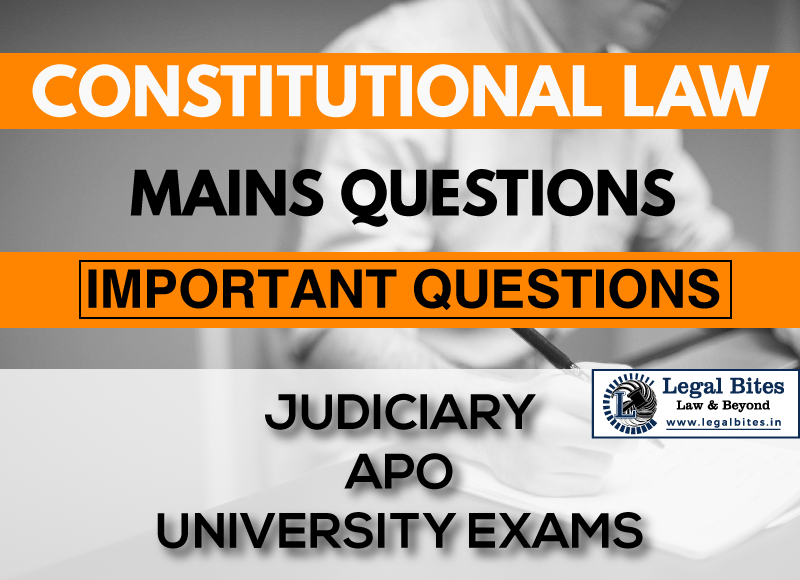Question: “The Government of India Act, 1935, was federal in structure but unitary in spirit.” Do you agree? Give reasons for your answer. [BJS 1984] Find the answer to the mains question only on Legal Bites. [“The Government of India Act, 1935, was federal in structure but unitary in spirit.” Do you agree? Give reasons for your answer] Answer Federalism was introduced in India by the Government of India Act, 1935. While drafting the Constitution of Indian, the framers wanted to give...
Question: “The Government of India Act, 1935, was federal in structure but unitary in spirit.” Do you agree? Give reasons for your answer. [BJS 1984]
Find the answer to the mains question only on Legal Bites. [“The Government of India Act, 1935, was federal in structure but unitary in spirit.” Do you agree? Give reasons for your answer]
Answer
Federalism was introduced in India by the Government of India Act, 1935. While drafting the Constitution of Indian, the framers wanted to give a federal look and structure to the constitution, considering the pluralistic characteristics of India. The act of 1935 was an improvement on the existing position with its introduction of provincial autonomy. The ministers of the provincial governments, according to it, were to be responsible to the legislature.
It is known that the Constitution of India contains certain integral federal features such as two governments; division of powers between the union and its constituents; the supremacy of the Constitution; rigidity of the Constitution; independent Judiciary; bicameralism, which gives it a federal structure. However, unlike the true federal states like the USA, the Indian federation was not a result of a compact between several sovereign units but a product of the conversion of a unitary system into a federal system.
The Indian federal system is a compromise between two conflicting considerations such as autonomy enjoyed by the states within the constitutionally prescribed limit (State List) and the need for a strong center in view of the unity and integrity and sovereignty of the nation. Therefore, it is correct to say that the Government of India Act, 1935 was although federal in structure as framed by the legislators but it contains a unitary form of government in spirit.
Important Mains Questions Series for Judiciary, APO & University Exams
- Constitutional Law Mains Questions Series Part-I
- Constitutional Law Mains Questions Series Part-II
- Constitutional Law Mains Questions Series Part-III
- Constitutional Law Mains Questions Series Part-IV
- Constitutional Law Mains Questions Series Part-V
- Constitutional Law Mains Questions Series Part-VI
- Constitutional Law Mains Questions Series Part-VII
- Constitutional Law Mains Questions Series Part-VIII
- Constitutional Law Mains Questions Series Part-IX
- Constitutional Law Mains Questions Series Part-X


